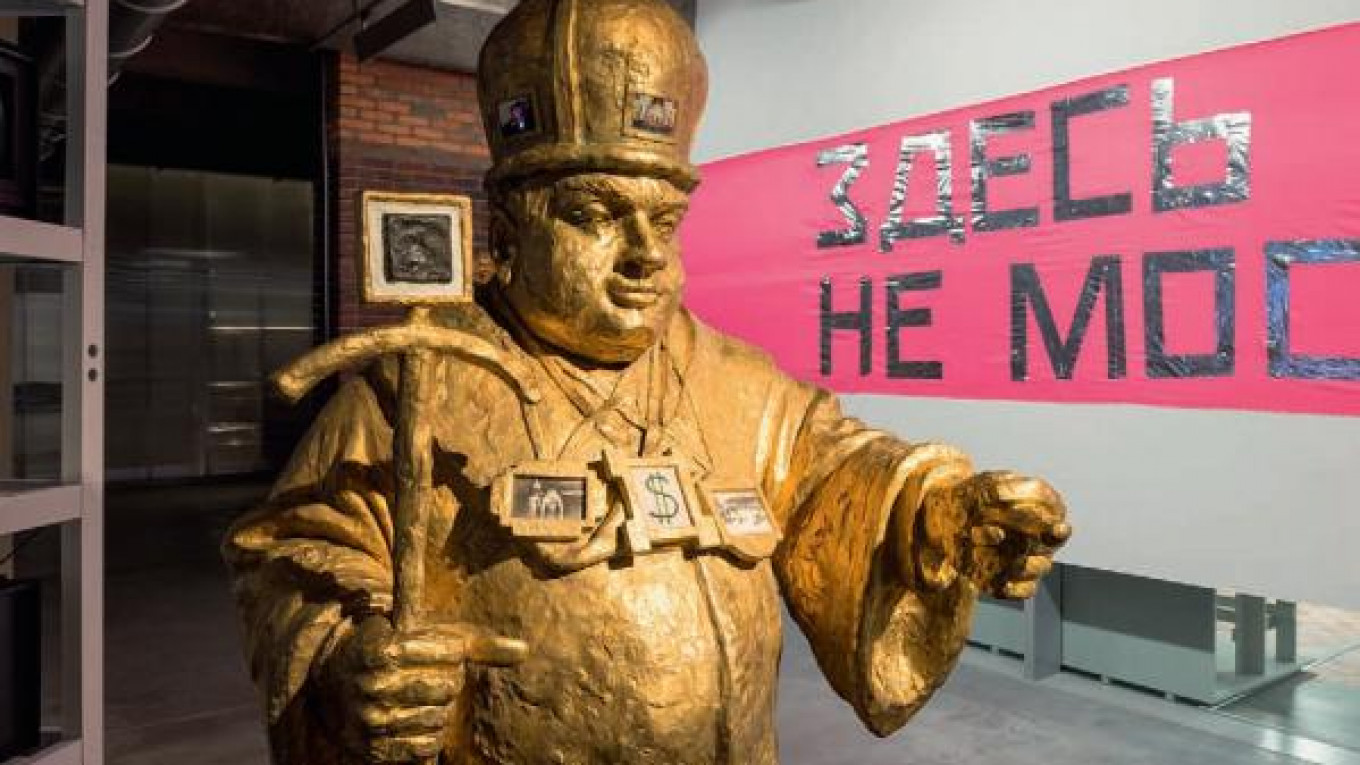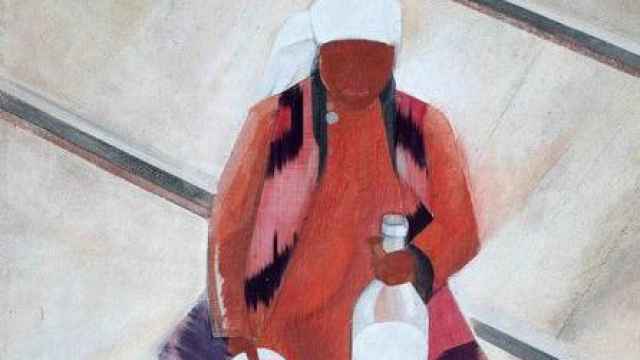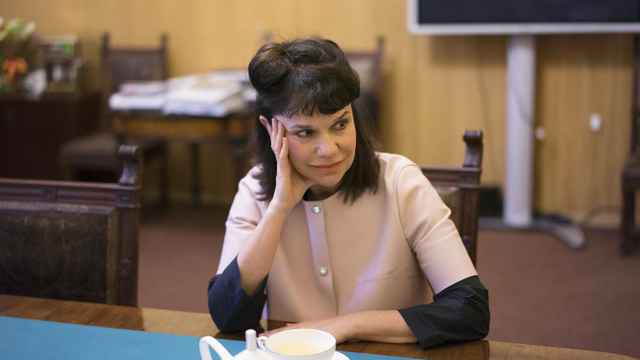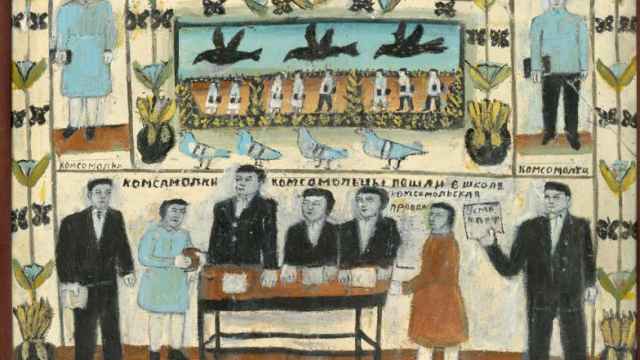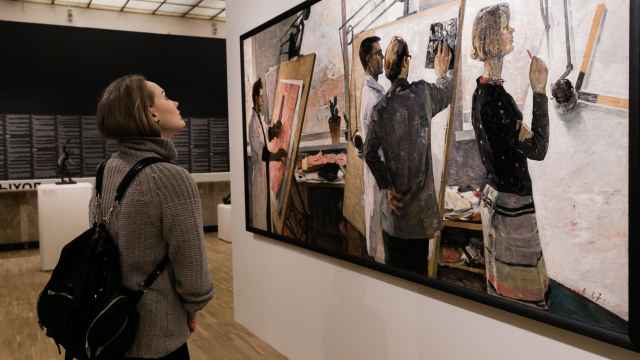In under 10 years, the Garage Museum of Contemporary Art has achieved a remarkable feat. Not only has it become one of the city’s top venues for cutting-edge exhibitions, it has acquired the trappings of a real institution, with its own archive, library, educational program and research department.
Now it is attempting to cement its place in the big league by launching an ambitious project that aims to show that Garage is in tune with developments on the art scene in Russia’s regions as well as in the international arena.
Last week, Garage opened its first ever Triennial of Russian Contemporary Art, probably its largest undertaking since the move to its new home in Gorky Park in 2015. The Triennial’s slogan is “Discover Russia as you’ve never seen it,” and the six curators behind it, led by the commissioner Kate Fowle, have prepared a surprisingly thorough review of Russian contemporary art.
While the event is not the first of its kind in the Russian capital, what sets Garage’s exhibition apart from the Moscow Biennale, the Moscow Biennale of Young Art and the Moscow Biennale of Street Art is that it focuses strictly on Russian art.
Russian collectors have been making big waves on the art scene in recent years, but contemporary art from the country remains under-promoted and is barely represented at major fairs such as Basel Art or Frieze. With the high profile and international connections of its owners, the power couple of Roman Abramovich and Daria Zhukova, Garage is in a perfect position to remedy that situation.
As part of the selection process, the curators went to 40 cities and met with 200 artists aged 19-69. A total of 68 artists were selected to present their works in various media, from painting and sculpture to video, installation and conceptual works. Most of the works were created in the last five years.
Andrei Miziano, one of the six curators, said the research team was surprised to discover that many artists prefer not to move to Moscow, but would rather “stay and work with local materials connected to their hometowns, their history and peculiarities.”
Anton Belov, Garage’s director, says that the ambitious venture started life as “an idea to do a regular project about Russian contemporary art.”
“We realized that we can’t do it every year, because the research is quite lengthy and complex and requires regular travel around the country,” he says. “That’s how we decided to do this project once every three years and then prepare for the next one.”
Belov is keen to stress that the Triennial is different from other reviews of Russian contemporary art: “It’s not desktop research, when curators only talk to artists over the phone or when they come to Moscow on a business trip. Our curators have actually gone into the field,” he says.
The project was first conceived in late 2015 when Belov and his team started thinking about the format for the exhibit, which they aimed at presenting Russian art to both domestic and international audiences.
“We wanted to make this project interesting and comprehensive, but didn’t want to exhibit the artists as representatives of particular regions, because in our opinion, that would be detrimental to the artworks themselves,” he says.
“We didn’t want to say: ‘That’s what the region is like and that’s the kind of art made there.’ We wanted to determine several vectors of development and unite the artists along those lines.”
The “vectors,” or categories, discovered
and defined by the curators include “Personal
Mythologies,” “Fidelity to Space,” “Common
Language,” “Street Morphology” and others.

Alexandra Paperno, a Moscow-based, New York-trained artist, presented her work “Suspense”—a series of three paintings originally painted for a group exhibition at VDNKh in 2015—as part of the “Common Language” category since she didn’t have enough time to make new works for the exhibition.
“My work process is quite slow,” she explains. “I suggested to curator Snezhana Krasteva that the three paintings of empty rooms called ‘Suspense’ would fit the idea perfectly and she agreed.”
“Pushkinskaya Ulitsa, 2013” is a series of paintings depicting the walls of several buildings on a street in artist Kirill Garshin’s hometown of Voronezh.
“The series on one hand shows how all cities are similar, at the same time as expressing affection for one’s hometown,” says Garshin. He describes his work, which was chosen for the “Fidelity to Space” category, as challenging the traditional picture-postcard associations that a city has for tourists.
Not all of the works on show as part of
the Triennial are in the Garage building
itself, with those categorized under “Street
Morphology” exhibited in Gorky Park. St.
Petersburg artist Alexander Shishkin-Hokusai’s
cardboard cutouts adorn the roof of the
museum’s now abandoned temporary building,
while Moscow’s Kirill Kto has sprayed a
mural over an administrative building by the
Krymsky Most bridge.
A Message from The Moscow Times:
Dear readers,
We are facing unprecedented challenges. Russia's Prosecutor General's Office has designated The Moscow Times as an "undesirable" organization, criminalizing our work and putting our staff at risk of prosecution. This follows our earlier unjust labeling as a "foreign agent."
These actions are direct attempts to silence independent journalism in Russia. The authorities claim our work "discredits the decisions of the Russian leadership." We see things differently: we strive to provide accurate, unbiased reporting on Russia.
We, the journalists of The Moscow Times, refuse to be silenced. But to continue our work, we need your help.
Your support, no matter how small, makes a world of difference. If you can, please support us monthly starting from just $2. It's quick to set up, and every contribution makes a significant impact.
By supporting The Moscow Times, you're defending open, independent journalism in the face of repression. Thank you for standing with us.
Remind me later.


